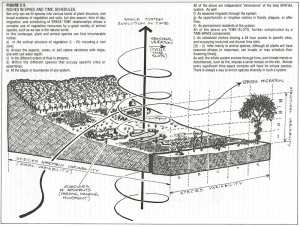The Core Principles of Agroecology
How many ways can you introduce and define Agroecology? We tried a couple of ways for the first pair of posts in the ‘What is Agroecology?’ blog series. As we get deeper into the discussion and debate of the discipline, we will find that there are many other ways to describe and think about the fundamental framework and concepts of agroecology. This post is a first leap from the most basic and universal introduction of agroecology to begin identifying its foundational principles of systems, production, biodiversity, and resilience. Here, we focus on the first of agroecology’s core principles, systems.
Agroecosystems are…
- the framing of agriculture as an ecological system.
- interacting parts of a dynamic and complex system.
- diffuse boundaries among systems in nested scales.
- human-mediated, self-regulating and provisioning systems.
Thinking About Systems

To an agroecologist, everything can be understood as a system. Each system is made up of dynamic parts that interact at various levels and scales. We describe the focus of our systems perspective as an agroecosystem. Agroecosystems are defined by environmental characteristics, species assemblage, and complex abiotic and biotic interactions of farming systems. The environmental characteristics and species assemblage (i.e., plants, animals, microbes, people) are the parts of the system. These parts must be clearly identified if you are to effectively manage the system because it is the dynamic interaction of these parts that is manipulated. In order to thoughtfully manage and evaluate your agroecosystem you must clearly define its boundary and scale.
An easy trap for farmers is to view their farm as a solitary entity with boundaries defined by their fence line. The sole purpose of the land inside this farm boundary is to maximize production. This is a narrow view of farms that diminishes the importance of surrounding areas and broader ecosystem functioning. In agroecology, farms are systems with diffuse boundaries that can be defined at multiple scales. The scale at which the agroecosystems operates determines the appropriate boundary.

A focus on one specific crop plant is the organism scale. The growth of crop plants in a group reflects a population scale perspective, while the interaction of the crop and other plant species (i.e., weeds and companions) is the community scale. Consideration of environmental characteristics, such as water availability to that crop and the effect of water movement through the farm on crop growth and potential erosion, is the ecosystem scale. The management, production, and distribution, of farm products and economies is the food system scale.
Closing the Loop for Sustainability
Agroecosystems are perpetually interacting across boundaries and scales as nutrients, pests, and food moves on and off of farms. Yet, the unrestrained globalization of the food system has resulted in growing social inequality and shattered the self-regulating and provisioning services that define a healthy agroecosystem. Socially, globalized food systems have displaced local farmers and disrupted their access to land and food. The environmental result of this open system is a heavy reliance on external sources of energy and nutrients and a constant barrage of pests and diseases. Healthy agroecosystems constrain the materials and energy cycling within a closed system, which regulates the incidence of pests and diseases and provide the necessary elements for the production of food. Moving your farm towards sustainability requires a commitment to progress towards a closed-system dynamic and healthy agroecosystem functioning.
Can you define your agroecosystem by its functional boundaries? Who/what are the key players? How do they interact?
What can you do to improve sustainability of your management practices and advance your agroecosystem towards a healthy-functioning closed system?
 0
0
